I always thought it would be a fun challenge to take my 300mm zoom lens and capture the details of Grand Central. There are so many intricate design elements throughout the Terminal that one could spend many an hour doing solely that. From the constellations and their lighted stars to the sculpted acorns and oak leaves, and the brass information booth clock in all her glory there are just so many things that one could adore—and that’s just inside the main concourse.
Many of these details were influenced by French aesthetic. The three main artists that created works for Grand Central—Jules Felix Coutan, Sylvain Salieres, and Paul Cesar Helleu—were all French. Architect and distant Vanderbilt cousin Whitney Warren studied at the famed École des Beaux-Arts in Paris, applying what he learned when designing the Terminal. Yet arguably the most influential person to define the visual style of Grand Central was actually William Kissam Vanderbilt. Grandson of Commodore Cornelius Vanderbilt, William served as one of the Directors of the New York Central and Hudson River Railroad and was an immense Francophile. It was he that insisted that Warren & Wetmore be involved in the Grand Central project, despite the fact that they had not participated in the design competition that Reed & Stem had won. Whitney Warren was said to have brought some of his design concepts directly to William, and their shared love of everything French shaped the station we see today.
Even the acorn and oak leaf motif prominent throughout Grand Central was promoted by William, as his first wife Alva, an American socialite infatuated with Europe’s aristocracies, is usually the person credited for developing the Vanderbilt coat of arms which used that imagery. Not uncommon during the Gilded Age, Alva conceived an arranged marriage for their daughter Consuelo with an English duke, exchanging American wealth for the status boost of a title. As the Duchess of Marlborough, Consuelo became acquainted with sky ceiling artist Paul Helleu and he painted her several times. Her father became a collector of Helleu’s work, which largely focused on high society women on both sides of the ocean. Helleu’s concept for the starry heavens is vastly different from the rest of his work, yet remains one of his most notable.
Gallery not found.Looking at the details, it starts to become apparent why there is currently work going on to clean and restore the main concourse. Grime and peeling plaster are both revealed when looking close up. In some respects Grand Central was never designed for its high up details to be studied as close as I have. The lower walls of the Terminal, easily visible to those passing through, were made of polished Botticino marble, yet as a cost saving measure the walls above, seen only at a distance, were created of imitation Caen stone. From far away it is hardly possible to tell it is not genuine stone—except when it begins to peel, as it is surrounding Salieres’ over the window sculptures.
Started at the end of October 2020, the job was described as a “multi-year interior restoration of a national treasure” by historic preservation contractor Nicholson & Galloway. Divided into phases and beginning on the west balcony, the work on that portion was complete and the scaffolding removed at the end of March—revealing a newly cleaned wall. It is surprising how spotless it looks, and how used to the dirt I had become in these two plus decades since the last restoration. The grime seemed to give the wall a little bit of texture, imitating the paint job on the artificial stone that made the walls look like they were made of individual multicolored blocks before the last restoration. No matter how used to that look we may be, it was not the intention of the architects, as painstaking “paint archaeology” testing revealed the walls were originally monochromatic. I am certainly eager to see how lovely our cathedral of transportation will look at the end of this work, returned to the way it was historically.
Throughout the restoration project those passing through the Terminal will find scaffolding covering portions of the main concourse. To make up for the temporarily diminished view, the scaffolding walls have been covered with a collection of drawings of Grand Central, contributed by the New York City Urban Sketchers. The art show is estimated to last through at least the summer, until the scaffolding is fully removed.
As for details in Grand Central, I invite you to take the challenge yourself, and see what little things you can discover about the Terminal. And if you happen to have a 500 or 600mm lens, meet me in Grand Central and I’ll show you one of the secret details that few have ever seen.


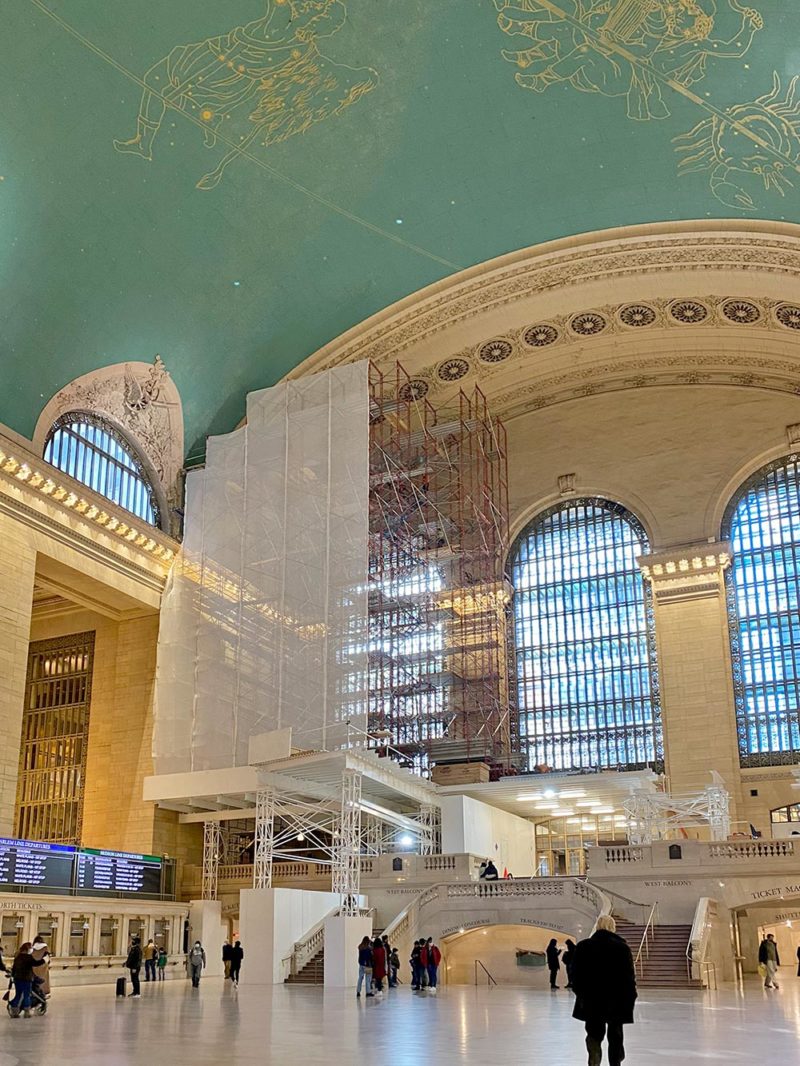
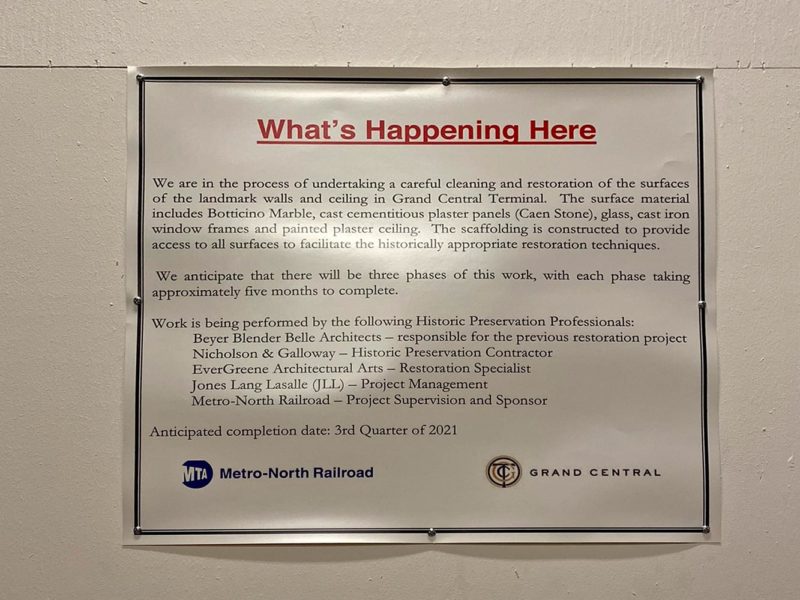
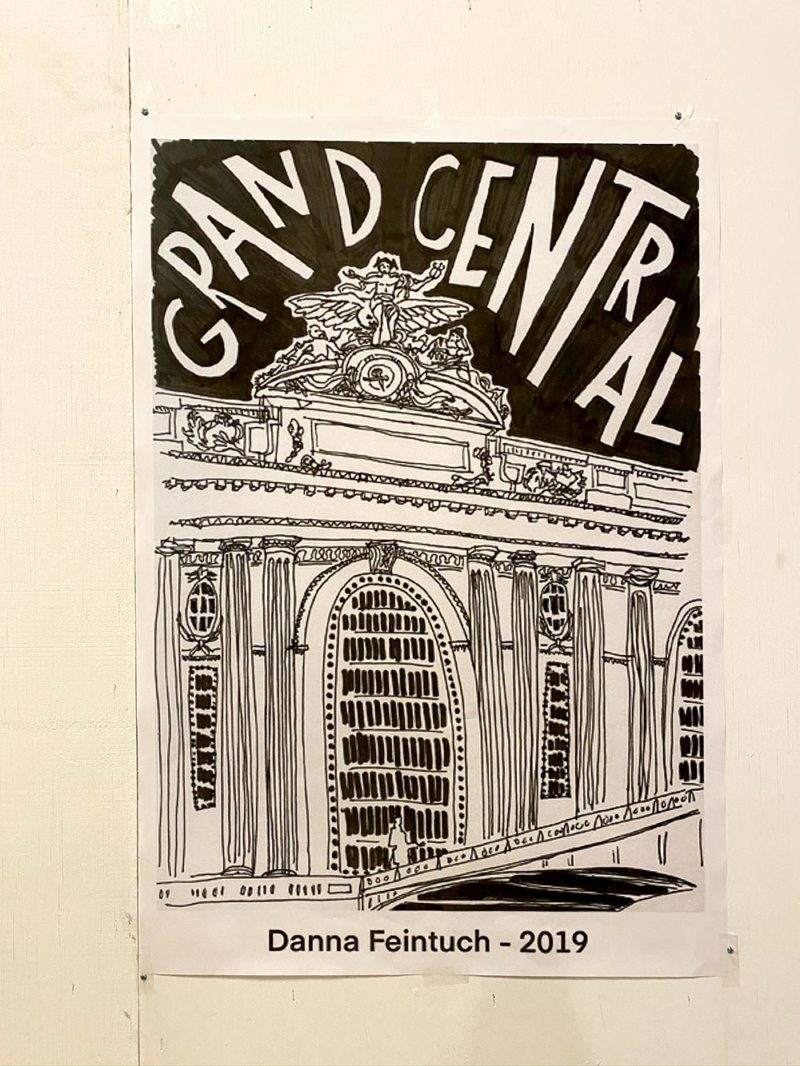
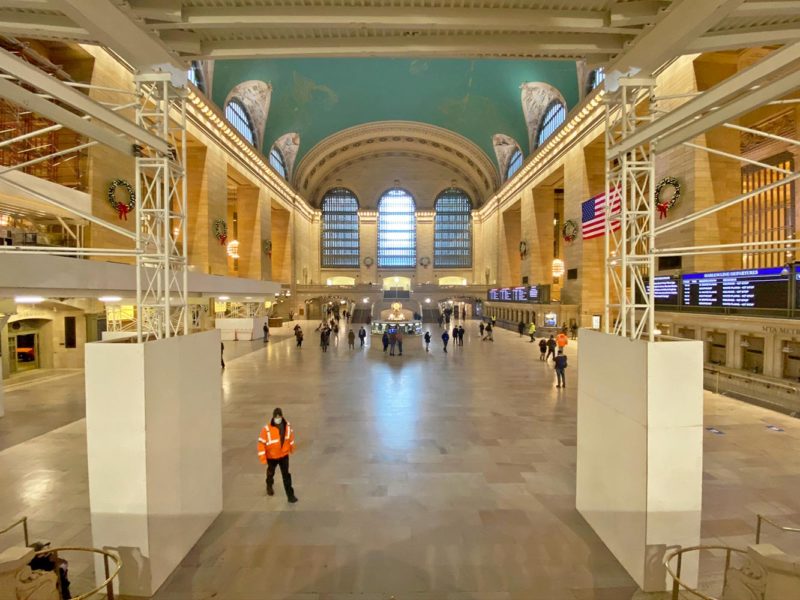
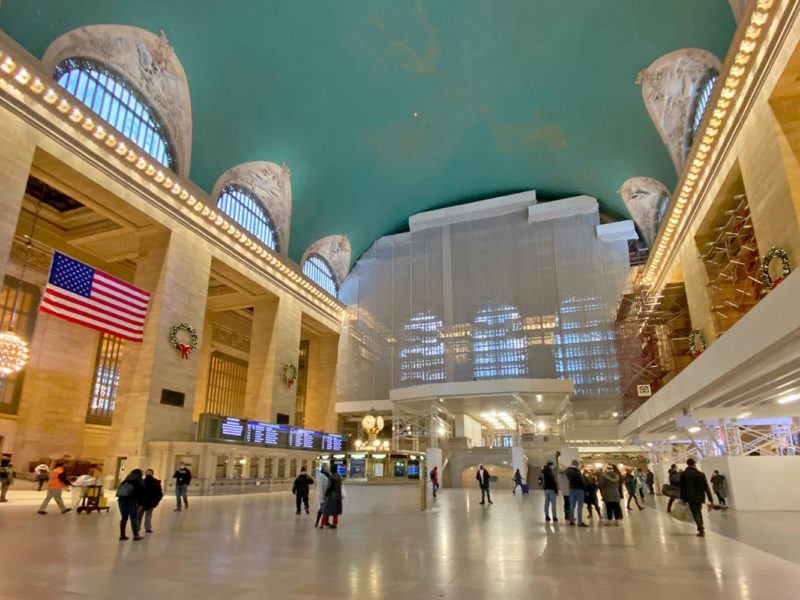
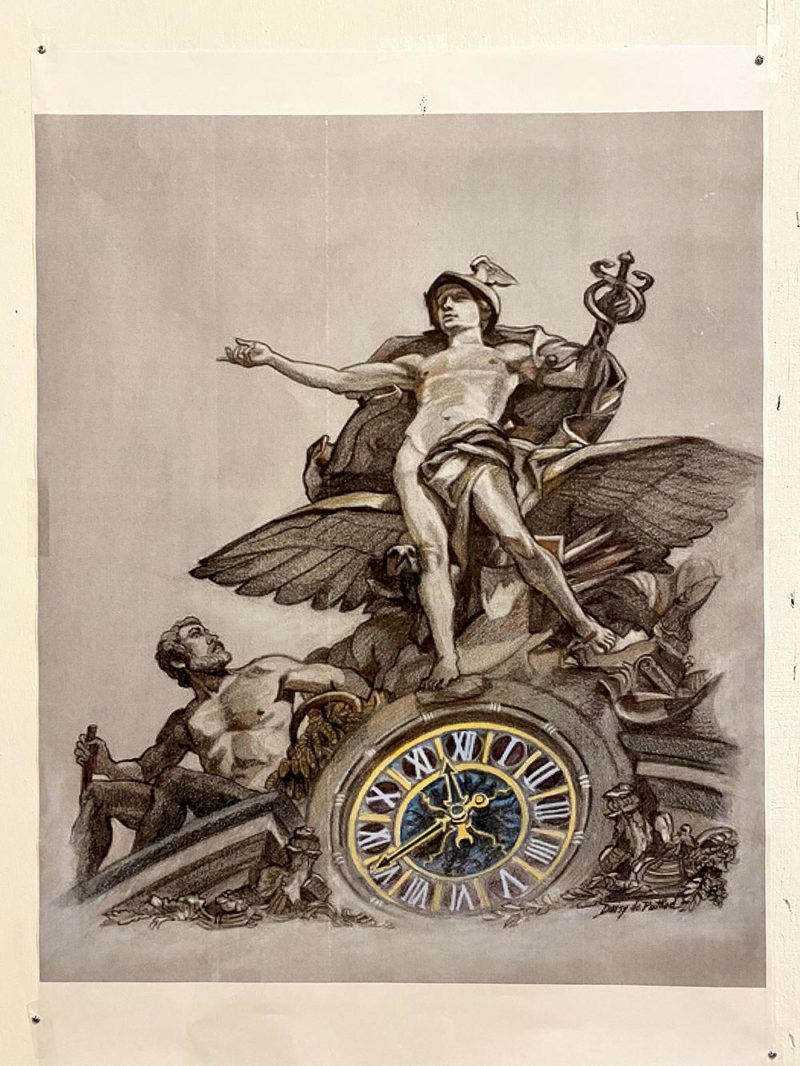
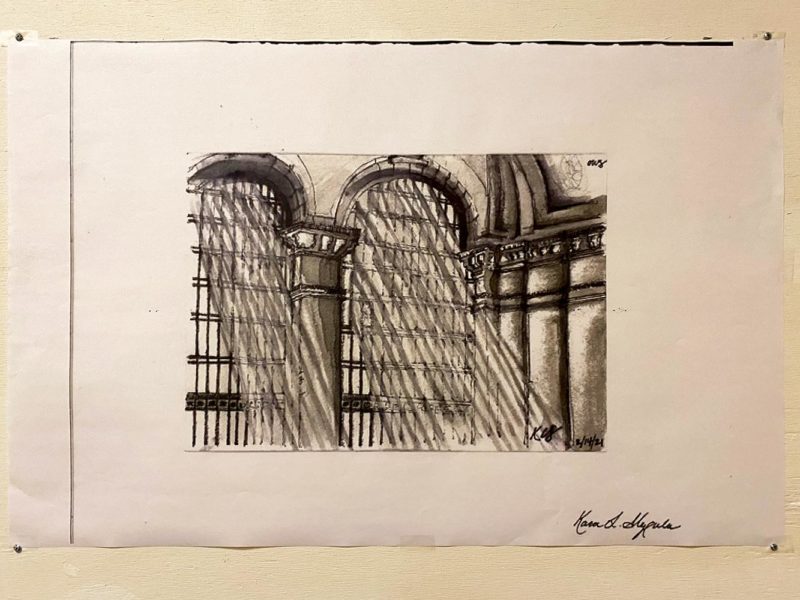

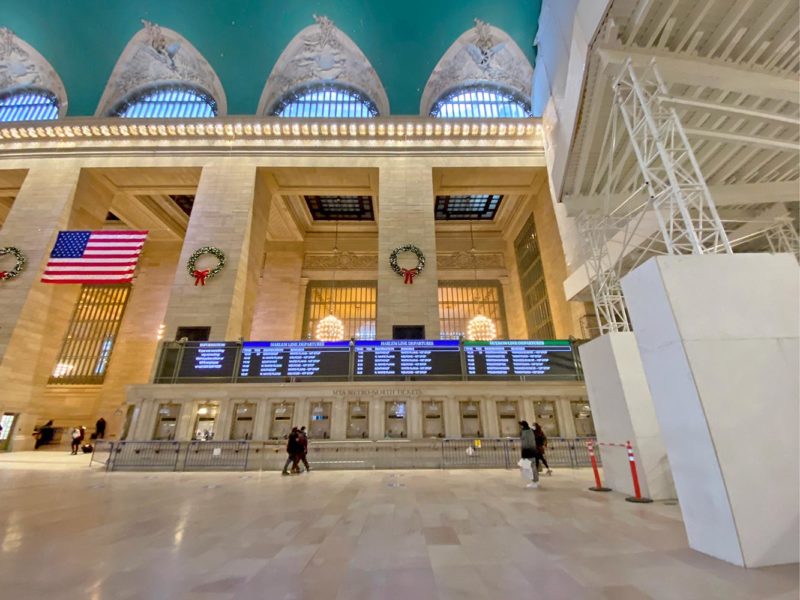
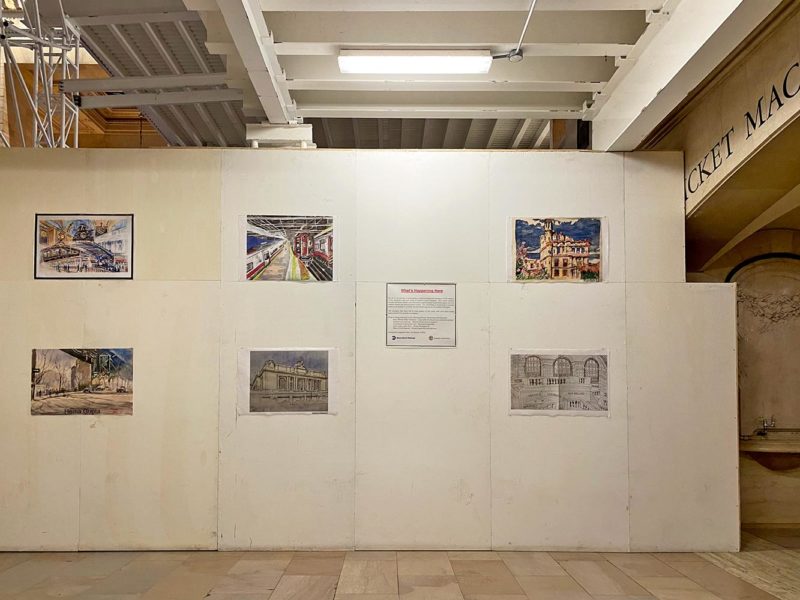
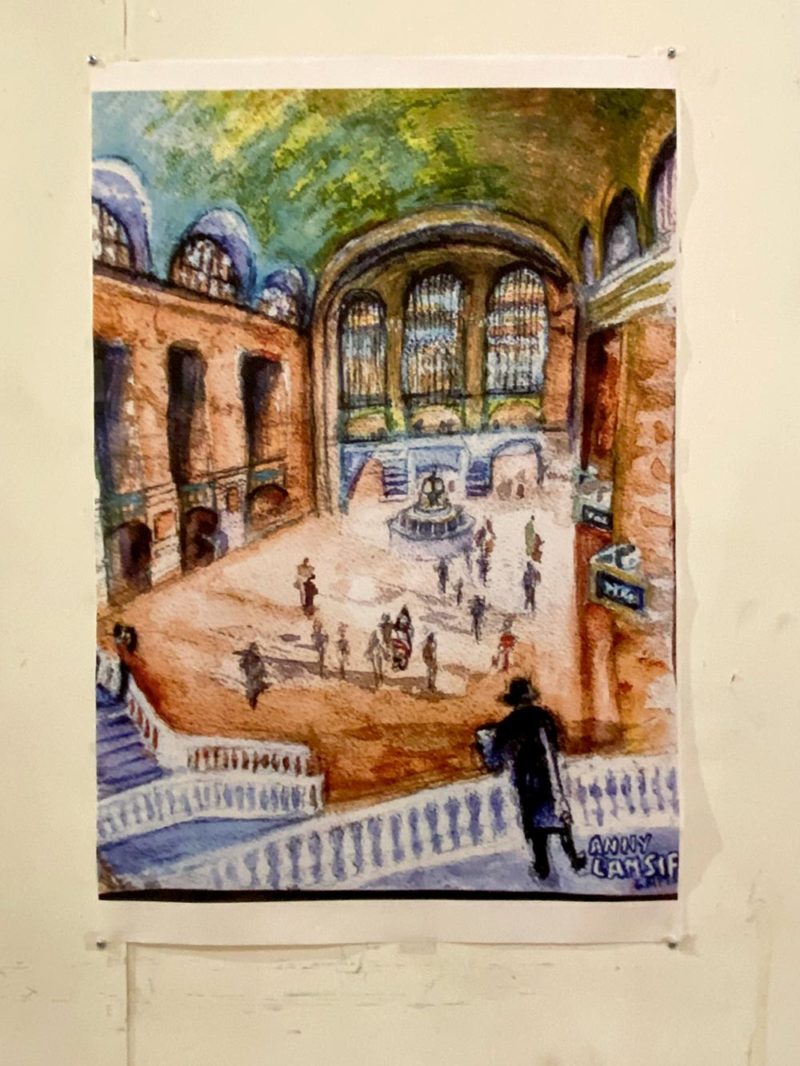
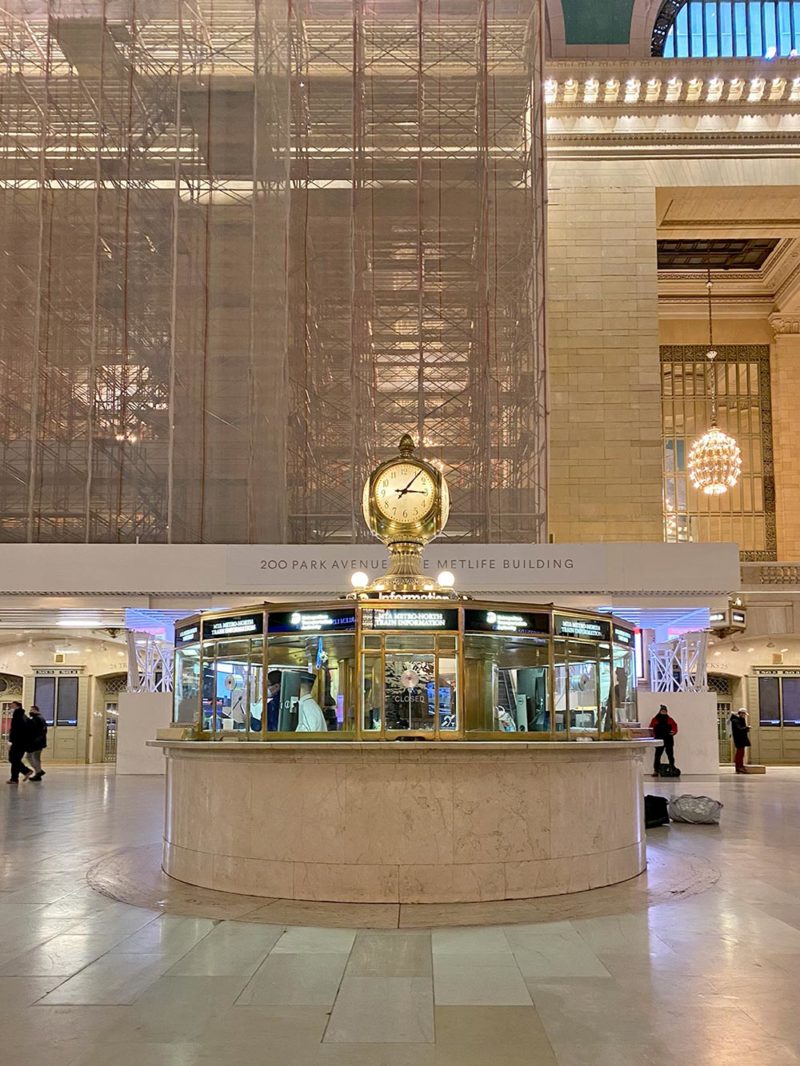

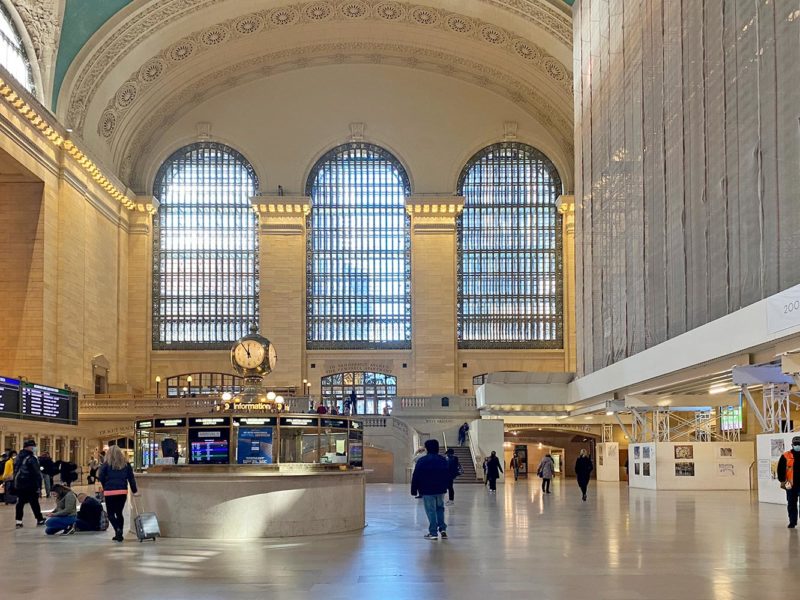
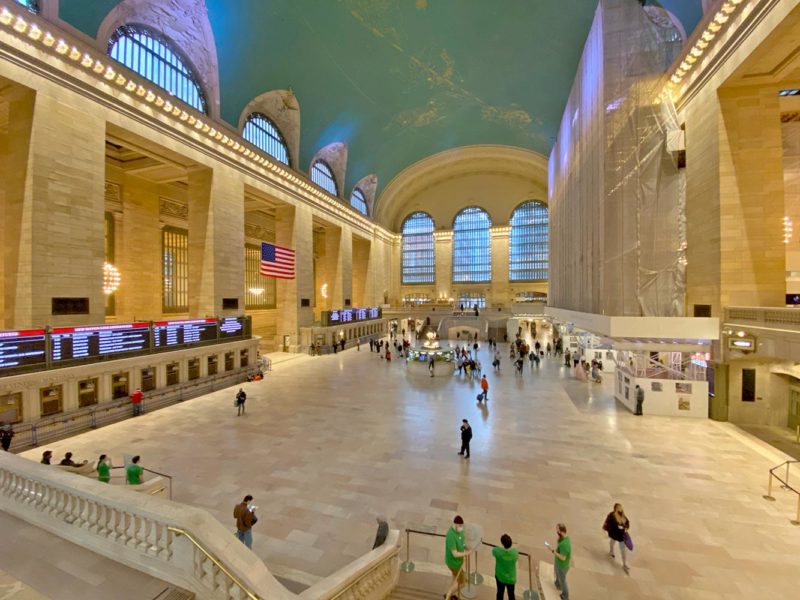
In 1943, the New York Central ran an ad about Grand Central.
https://books.google.com/books?id=N1AEAAAAMBAJ&lpg=PA53&dq=life%20grand%20central%20terminal&pg=PA53#v=onepage&q&f=false
In 1944 Popular Mechanics ran a detailed illustrated article on Grand Central.
https://books.google.com/books?id=JN8DAAAAMBAJ&lpg=PP1&dq=life%20grand%20central%20terminal&pg=RA1-PA33#v=onepage&q&f=false
Absolutely delightful essay and photos!! I fondly remember a different picture from a while back where that number 6 window was open. :-)